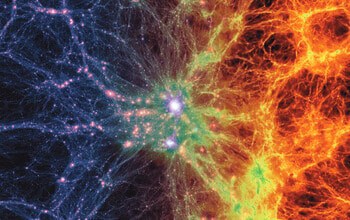Today, the National Science Foundation (NSF) announced a $110 million award to the University of Illinois at Urbana-Champaign and 18 partner institutions to continue and expand activities undertaken through the Extreme Science and Engineering Discovery Environment (XSEDE).
A virtual organization that has become the cornerstone of the nation’s cyberinfrastructure ecosystem, XSEDE, which received initial NSF funding in 2011, accelerates open scientific discovery and broadens participation in advanced computing by lowering the barriers for researchers, engineers and scholars to use and access computing resources. Under the new five-year award, called XSEDE 2.0, the organization will maintain existing services to its large user community and add innovative elements in response to ever-evolving user demands and supporting technologies.
“XSEDE 2.0 will continue to expand access to NSF-funded cyberinfrastructure resources and services available to the science and engineering community across the nation,” said Irene Qualters, director for the Division of Advanced Cyberinfrastructure (ACI) at NSF. “The nation’s discovery and innovation enterprise requires a dynamic and highly interoperable ecosystem that can anticipate and respond to new instruments, new computing capabilities, new research communities and new expertise. XSEDE 2.0 is a critical human component in NSF’s advanced computing infrastructure strategy, seeking to enable the broad and deep use of computational and data-intensive research to advance knowledge in all fields of study.”
The project aligns with the objectives of the National Strategic Computing Initiative (NSCI) — a whole-of-government effort that fosters a coordinated federal strategy in high-performance computing (HPC) research and deployment. NSF serves as one of the initiative’s three lead agencies.
XSEDE 2.0 supports NSCI’s goals. These include holistically expanding the capabilities and capacity of a robust and enduring national HPC ecosystem and contributing the educational and workforce development necessary to prepare current and future researchers and technical experts.
Last year, XSEDE provided computational and data services to more than 6,000 scientists, engineers and students. Through its web portal, it supported more than 20,000 users. In the first four years of the project, users acknowledged support by XSEDE and its related computational resources in roughly 14,000 publications. Among these XSEDE-supported studies were efforts that:
- Confirmed the discovery of gravitational waves.
- Developed high-resolution maps of the Arctic.
- Uncovered the structure of HIV.
- Helped prevent injuries from car accidents.
Under the new phase of funding, XSEDE 2.0 will perform a number of critical functions, including:
- Managing and delivering services for a portfolio of supercomputers and high-end visualization and data analysis resources to address increasingly diverse scientific and engineering challenges.
- Managing the allocation process by which researchers access advanced computing resources, and continuing to improve and innovate this process in alignment with new research access workflows and new resources.
- Building on the XSEDE tradition of outstanding user services and engaging a new generation of diverse computational researchers through education, training, outreach activities and by connecting to campus HPC communities to help researchers access local and national resources.
- Offering extended collaborative support services, which pair XSEDE computational or software engineering experts with domain scientists to strengthen a project or develop a tool needed to advance research.
- Continuing to operate and improve XSEDE’s integrated HPC capability at a national scale, providing a one-stop-shop experience for users across the XSEDE-coordinated cyberinfrastructure ecosystem.
For nearly four decades, NSF has supported the nation’s scientific community by providing cyberinfrastructure beyond the reach of individual academic institutions, enabling transformative research in such diverse areas as particle physics, cosmology, biology, nanotechnology, ecological modeling, economics and civil engineering.
Cyberinfrastructure includes advanced instruments, computing systems, data tools, software, networks and people that collectively improve the research productivity of the nation’s computational scientists and engineers. Critically important to this vision of cyberinfrastructure is the dynamic interplay between advanced resources and human developers and users.
“As the role of computational and data science in advancing scientific and engineering frontiers has grown, it has produced a significant increase in the demand for supporting infrastructure,” said John Towns, executive director for Science and Technology at the University of Illinois at Urbana-Champaign’s National Center for Supercomputing Applications and the principal investigator for XSEDE. “The XSEDE 2.0 project recognizes that investment in physical infrastructure must be complemented by investment in software and human services.”
If our reporting has informed or inspired you, please consider making a donation. Every contribution, no matter the size, empowers us to continue delivering accurate, engaging, and trustworthy science and medical news. Independent journalism requires time, effort, and resources—your support ensures we can keep uncovering the stories that matter most to you.
Join us in making knowledge accessible and impactful. Thank you for standing with us!

